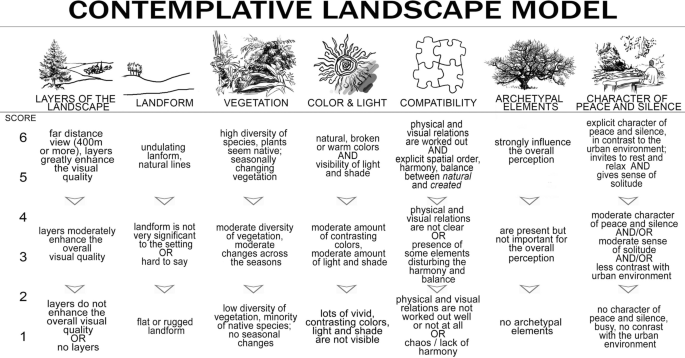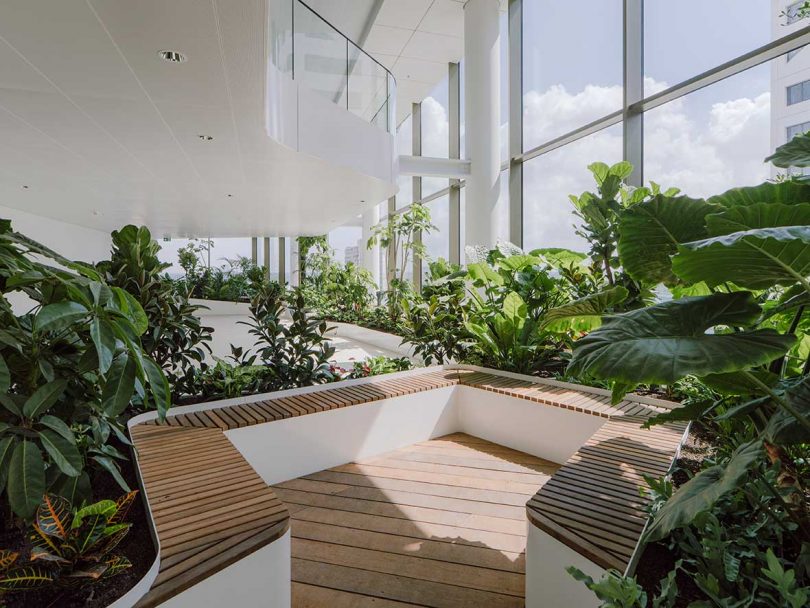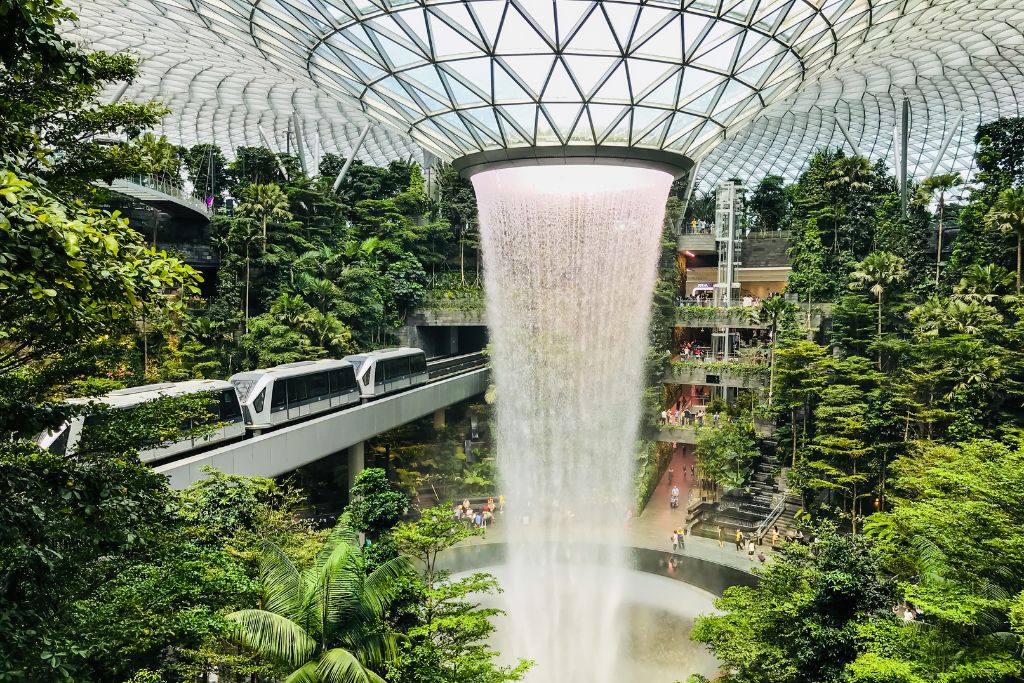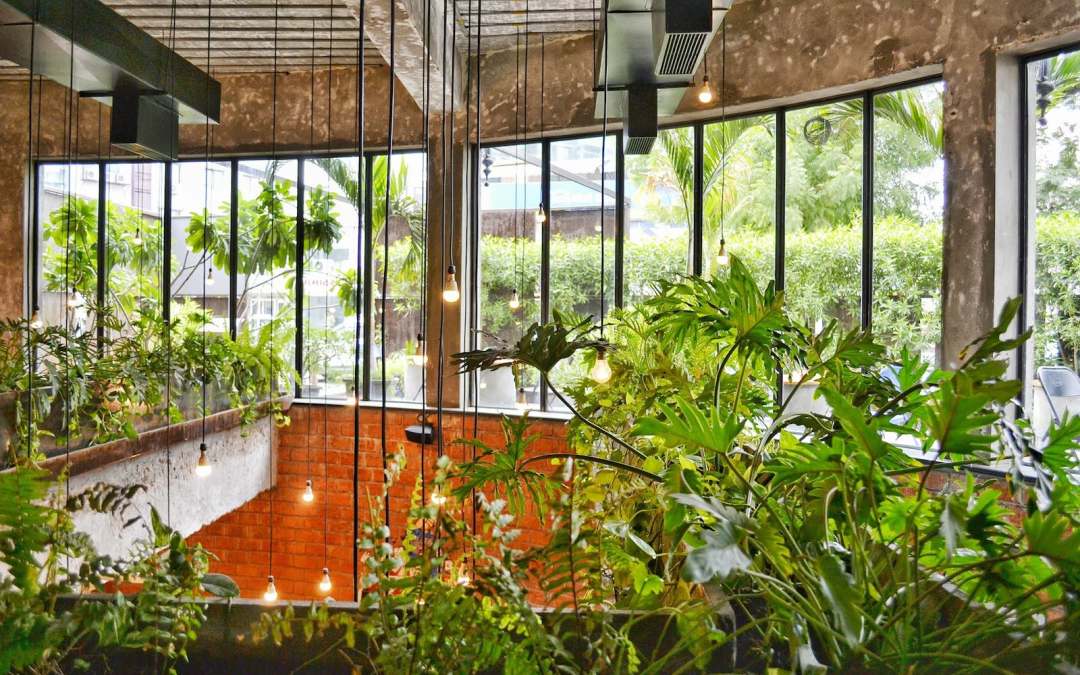The Psychological Benefits of Water Features in Urban Design.
Urban design plays a pivotal role in the development of our cities, emphasizing urban aesthetics and sustainability, with one of its most captivating elements being the incorporation of water features such as lakes, rivers, and streams. From tranquil ponds to dynamic fountains, these components significantly enhance the aesthetic appeal of public spaces while providing notable psychological benefits.
This article examines the various types of water features, their integration into urban landscapes, and the positive effects they impart on individual and community well-being. It highlights how these serene additions can transform urban environments and cultivate a sense of community among residents.
What Is Urban Design?
.jpg_00.jpeg)
Urban design is a complex and interdisciplinary field that emphasizes the development and organization of urban spaces. It integrates various elements, including architecture, landscape architecture, and infrastructure, to create environments that are both functional and aesthetically appealing.
The primary objective of this discipline is to enhance the livability and accessibility of urban areas while taking into account the ecological and social factors that contribute to the well-being and resilience of communities.
By encouraging social interaction and community engagement, effective urban design not only improves the urban landscape but also fosters psychological benefits through immersion in nature and thoughtful spatial arrangement.
What Are Water Features in Urban Design?
Water features in urban design include a range of elements such as fountains, ponds, and water gardens that fulfill both aesthetic and functional roles, significantly enhancing the overall ambiance of urban landscapes.
These installations not only elevate the visual appeal of public spaces but also contribute to effective water management, ecological balance, and urban sustainability. By integrating water elements, urban designers encourage biodiversity, enhance air quality, and establish restorative environments that promote community well-being and social cohesion.
What Are the Types of Water Features?
The types of water features commonly incorporated in urban design include fountains, ponds, and water gardens, each offering distinct characteristics and benefits that enhance the sensory experience and visual appeal of public spaces.
Fountains often serve as focal points in urban environments, providing dynamic water sounds along with aesthetic charm, whereas ponds and water gardens act as habitats that support urban biodiversity and contribute to ecological restoration. The presence of flowing water can create a calming atmosphere, fostering mindfulness and relaxation among city residents.
Reflecting pools offer opportunities for quiet contemplation, with their mirrored surfaces elegantly capturing the surrounding scenery.
The integration of these water features into city planning not only enriches visual interest and aesthetic experience but also promotes social interactions and community dynamics, bringing communities together to appreciate nature within the urban landscape.
How Are Water Features Incorporated in Urban Design?
Water features are integrated into urban design through meticulous spatial planning, landscape architecture, and the incorporation of green infrastructure, ensuring alignment with the overarching aesthetic and functional objectives of the urban landscape. Designers employ nature-based solutions to optimize the effectiveness of water features, thereby enhancing public spaces while simultaneously addressing urban challenges such as climate resilience and the mitigation of urban heat islands.
By taking into account water circulation and quality, urban planners create environments that not only cater to recreational needs but also contribute to the ecological integrity of the city.
These planners frequently integrate elements such as landscape elements and natural settings such as:
- Rain gardens
- Bioswales
- Permeable surfaces
to manage stormwater efficiently, facilitating natural filtration, habitat creation, and the establishment of ecological restoration.
Community engagement is a critical component of the design process, ensuring that the water features resonate with the needs and preferences of local residents. This comprehensive approach fosters a strong connection between citizens and their environment, enhancing urban biodiversity and promoting ecological design within urban settings.
By prioritizing sustainability in their designs, urban planners can mitigate flooding risks, improve air quality, and create essential green corridors that support urban wildlife, ultimately enriching the overall ecological health of the city.
What Are the Psychological Benefits of Water Features in Urban Design?
Water features in urban design offer a variety of psychological benefits, playing a critical role in enhancing mental health and emotional well-being through stress reduction and relaxation.
By establishing tranquil environments, such as water gardens and public fountains, these features promote mindfulness and nature therapy, thereby fostering a stronger connection between individuals and the natural world.
The calming sounds of flowing water, along with the visual tranquility of aquatic elements, significantly enhance the sensory experience of public spaces.
This contributes to the creation of restorative environments that support community well-being and facilitate social interaction.
1. Reduces Stress and Anxiety
The presence of water features, such as fountains and ponds, plays a significant role in stress reduction and anxiety relief, thereby creating therapeutic landscapes that promote relaxation, mindfulness, and psychological restoration.
The calming sounds of flowing water have been shown to enhance feelings of tranquility, allowing individuals to retreat from the chaos of urban life and engage in therapeutic experiences that soothe both the mind and body. This relief is particularly advantageous in bustling urban areas, where stress levels are often elevated.
Research has indicated that environments incorporating water not only attract individuals seeking solace but also contribute to overall well-being. A study published in the Journal of Environmental Psychology found that proximity to water can lower heart rates and reduce stress hormones, fostering a sense of peace.
Engagement with water—whether through observation or meditation—encourages mindfulness and deeper reflection, aiding individuals in reconnecting with their inner selves.
The rhythmic sounds and visual appeal of these natural elements facilitate contemplation, making them essential components of urban landscapes intended to uplift and rejuvenate those who encounter them.
2. Enhances Mood and Well-being
.jpg_01.jpeg)
Water features significantly enhance mood and overall well-being by creating inviting recreational spaces that foster emotional responses, sensory experiences, and a profound nature connection. Engaging with these elements not only improves visual appeal but also evokes positive emotions that contribute to the psychological restoration of urban residents.
The capacity to connect with nature through water features, even in densely populated environments, can elevate spirits and promote a sense of belonging within the community.
For instance, parks equipped with fountains or flowing streams encourage passersby to pause and reflect, allowing them to appreciate the soothing sounds of water and the gentle sight of rippling surfaces. This simple act can effectively reduce stress levels and enhance overall life satisfaction.
Urban plazas featuring ponds and reflecting pools offer a sanctuary for city residents, providing a calming backdrop for social gatherings, urban interaction, or solitary contemplation. By integrating these natural elements into urban landscapes, cities cultivate therapeutic benefits and an environment where individuals can temporarily escape the chaos of daily life, fostering mindfulness and a deeper sense of peace.
3. Promotes Relaxation and Mindfulness
The integration of water features in urban design serves to promote relaxation, mindfulness, and nature therapy, creating therapeutic landscapes that encourage individuals to unwind and engage in reflection. The gentle movement of water, along with its soothing soundscape, fosters an environment conducive to restorative practices, prompting users to participate in mindfulness activities such as meditation or quiet contemplation. This element of urban design is essential in enhancing public health and well-being.
Whether one chooses to take a leisurely stroll alongside a serene pond or rest on a bench near a gentle waterfall, the presence of water establishes a profound sensory connection to nature. In vibrant parks, families can delight in playful interactions with shallow fountains while children experience the joy of water play.
Designated areas for reflection, such as meditation gardens featuring small streams, can serve as retreats for individuals seeking respite from the chaos of daily life and enhance psychological restoration.
The sound of flowing water, combined with lush greenery, cultivates a tranquil environment that promotes deep breathing, thereby enhancing overall mental clarity and emotional equilibrium.
4. Improves Air Quality
Water features significantly enhance air quality in urban environments by facilitating natural processes that filter pollutants, improve water quality, and alleviate the urban heat island effect. The presence of water can improve local microclimates, thus creating a more enjoyable outdoor environment and promoting positive environmental psychology.
By integrating effective water management strategies and adaptive reuse into urban design, communities can reap the health benefits associated with cleaner air and a more sustainable environment.
These aquatic elements are essential habitats for numerous species, thereby enriching local biodiversity. Their capacity to absorb and evaporate water not only cools surrounding areas but also assists in replenishing groundwater supplies, which is vital for water conservation efforts and maintaining ecological balance. This practice also aids in mitigating the urban heat island effect, an important aspect of urban design.
Furthermore, the psychological comfort offered by water features, such as ponds or fountains, encourages individuals to engage more deeply with their surroundings, fostering a sense of community and connection to nature. This interaction enhances public spaces, providing therapeutic benefits that contribute to mental health and stress reduction.
This intricate interplay among urban ecology, air quality improvement, and human experience highlights the critical importance of incorporating water features in city planning and landscape architecture. These elements contribute to visual appeal and overall well-being.
5. Creates a Sense of Community
Water features play a crucial role in fostering a sense of community by encouraging social interaction and engagement within public spaces. These elements serve as gathering points where residents can converge, thereby cultivating relationships, enhancing social cohesion, and improving the quality of life in urban areas.
By incorporating water features into the urban landscape, designers create inclusive environments that prioritize community well-being, urban sustainability, and ecological restoration.
The presence of fountains, ponds, and streams not only enhances the aesthetic appeal of neighborhoods but also invites various activities, such as picnics, family outings, and local events. This encourages diverse groups to engage with one another, effectively breaking down social barriers and promoting inclusivity.
Furthermore, water features contribute to environmental sustainability by supporting biodiversity and improving urban microclimates. Research has demonstrated that spaces enriched with such elements experience increased foot traffic and community engagement, ultimately strengthening the connections among residents and creating a more vibrant and resilient urban fabric.
How Do Water Features Impact Urban Design?
Water features play a crucial role in urban design by enhancing aesthetics, promoting environmental sustainability, and contributing to urban resilience. These elements not only elevate the visual appeal of urban landscapes but also fulfill essential functions that support public health and ecological integrity.
By thoughtfully integrating water features into urban planning, designers can create spaces that are both visually appealing and conducive to community dynamics and ecological benefits. This approach aligns with the principles of ecological design and urban sustainability.
1. Aesthetics and Beauty
Water features significantly enhance the aesthetics and beauty of urban landscapes, creating visually appealing environments that attract both residents and visitors.
These dynamic installations complement architectural design and provide reflections of the surrounding structures, thereby enhancing the overall sense of space. The calming sounds of flowing water can transform a bustling area into a tranquil oasis, encouraging individuals to pause, relax, and reconnect with nature.
Furthermore, such features often create natural habitats that support local wildlife, adding another dimension of interaction within the urban environment. The thoughtful integration of water elements not only elevates the visual appeal of a neighborhood but also plays a crucial role in promoting mental well-being and community vitality, ultimately enriching the overall urban experience.
2. Environmental Sustainability
.jpg_10.jpeg)
Water features play an essential role in promoting environmental sustainability within urban design, supporting ecological design principles and the development of green infrastructure. By incorporating effective water management systems, cities can enhance urban ecology and contribute to climate resilience while addressing challenges such as stormwater runoff and urban heat islands. These sustainable practices not only provide environmental benefits but also improve the quality of life for urban residents.
The integration of elements such as ponds, rain gardens, and bioswales is instrumental in creating natural habitats for local wildlife, thereby fostering biodiversity within metropolitan areas. These features offer critical ecosystem services, including water filtration and temperature regulation, which are vital in mitigating the adverse effects of climate change.
By prioritizing water features in urban planning, municipalities demonstrate a commitment to creating greener living spaces, ensuring a harmonious balance between human activities and the natural environment. This thoughtful approach encourages community engagement with nature, promoting awareness and stewardship of local ecosystems.
3. Economic Benefits
Incorporating water features into urban design presents substantial economic advantages by enhancing property values, attracting tourism, and promoting community engagement.
Thoughtfully designed water elements can significantly transform public spaces, facilitating urban revitalization and stimulating local economies. By prioritizing the integration of water features, city planners can cultivate dynamic urban environments that improve the overall livability of the community.
These features can serve as central attractions for neighborhoods, appealing to potential buyers and investors seeking vibrant, aesthetically pleasing locales. Areas with well-designed water installations frequently experience increased foot traffic, which can lead to higher sales for local businesses.
The presence of tranquil lakes, fountains, and waterfalls not only enriches the visual landscape but also encourages outdoor activities, subsequently boosting the hospitality and service sectors. These elements support wellness and livability, enhancing the overall urban experience.
As cities endeavor to attract a diverse demographic, water features play a crucial role in creating inclusive spaces that engage both residents and visitors, ultimately contributing to a more resilient local economy.
4. Social Benefits
Water features provide numerous social benefits by fostering community cohesion and encouraging interaction among residents in public spaces. These elements create inclusive environments where individuals can gather, relax, and connect, thereby enhancing the overall social fabric of urban areas.
By promoting engagement and interaction, water features significantly contribute to the well-being and health benefits of the community as a whole, providing sensory experiences that enhance mindfulness and emotional response.
The soothing sound of flowing water often serves as a calming backdrop, drawing individuals together and instilling a sense of tranquility that enriches their experience. These installations can become focal points for community events, encouraging socialization and participation in outdoor activities. Consequently, such interactions can lead to improved mental health, as engaging in these environments helps to alleviate feelings of isolation and stress.
As residents and visitors congregate around these water features, they cultivate stronger relationships, share experiences, and foster a sense of belonging that is increasingly essential in today’s fast-paced world. This interaction enhances community dynamics and promotes urban living.
What Are the Considerations for Incorporating Water Features in Urban Design?
Incorporating water features into urban design requires careful consideration of several critical factors to ensure their successful implementation and sustainability.
Key considerations include location, maintenance, safety, and accessibility. Effective planning is essential to maximize the benefits of water features while minimizing potential challenges associated with water quality and circulation.
By addressing these factors, urban designers can create functional and aesthetically pleasing water elements that enrich the overall urban experience.
1. Location and Size
The location and dimensions of water features are essential aspects of their successful integration into urban design, significantly influencing their accessibility, visibility, and overall impact on the surrounding environment. Strategically positioned and appropriately sized water elements can enhance the spatial design of public spaces, promoting community engagement while improving the aesthetic experience of the urban landscape.
A thorough consideration of these factors is crucial for ensuring the effective functionality of water features and their contribution to urban resiliency.
When urban planners evaluate the placement of these elements, they must take into account not only the demographics of the area but also the effects of natural light and surrounding structures on visibility and visual harmony.
For example, larger water bodies can serve as focal points in expansive parks, attracting both residents and visitors, while smaller features such as fountains or ponds can provide serene retreats within urban centers. These elements contribute to habitat creation and ecological balance.
Ensuring that these features are accessible from multiple vantage points encourages interaction, thereby making them integral to fostering social connections within the community. This also enhances the cultural significance and immersive nature of these installations.
Ultimately, well-designed water features, tailored to their specific location and dimensions, play a pivotal role in enhancing both the ecological and recreational value of urban spaces. This approach supports the development of therapeutic landscapes and restorative environments.
2. Maintenance and Cost
Maintenance and cost considerations are essential components in the successful implementation of water features in urban design, as they have a direct impact on water quality management and sustainability initiatives. Effective maintenance ensures the therapeutic benefits and longevity of these features.
Regular maintenance is crucial to ensure that water features remain both aesthetically pleasing and functionally effective, requiring diligent budgeting and resource allocation. By emphasizing maintenance planning, urban designers can create sustainable water features that continue to provide benefits to the community over time.
Effective maintenance practices not only extend the lifespan of these features but also enhance their ecological integrity, promoting biodiversity and fostering healthy aquatic ecosystems. These practices contribute to urban waterways’ health and habitat connectivity.
The financial repercussions of overlooking these considerations can be considerable, resulting in increased restoration costs, loss of biodiversity, and potential adverse effects on surrounding urban landscapes.
Consequently, it is imperative for planners and developers to account for both immediate expenses and long-term maintenance requirements, thereby ensuring that water features contribute positively to urban environments and serve as viable resources for enhancing water quality, promoting urban sustainability, and encouraging community engagement within communities.
3. Safety and Accessibility
.jpg_11.jpeg)
Safety and accessibility are critical considerations when integrating water features into urban design, ensuring that these elements are welcoming and inclusive for all community members while enhancing overall urban resilience.
The success of such designs relies on meticulous planning and landscape architecture that prioritize the well-being and accessibility for all users. For example, the installation of non-slip surfaces and the provision of adequate lighting around water areas can significantly mitigate the risk of accidents, contributing to public health.
Furthermore, the inclusion of wheelchair ramps and seating areas ensures that all individuals can comfortably access and enjoy these spaces, promoting social interactions and enhancing community dynamics.
Engaging the community in the design process is essential, as it fosters a sense of ownership and respect while encouraging local input to tailor these features to specific needs and preferences, thereby enhancing community identity and social cohesion.
Ultimately, a well-designed water feature not only enhances the aesthetic appeal of an area but also serves as a catalyst for social interaction, community cohesion, and stress relief through nature-inspired design.
Frequently Asked Questions
What are some psychological benefits of water features in urban design?
Some psychological benefits of water features in urban design include reducing stress levels, promoting relaxation, providing therapeutic benefits, and increasing overall well-being through sensory experiences.
How do water features in urban design impact mental health?
Water features in urban design can have a positive impact on mental health by creating a sense of tranquility, enhancing mindfulness, and promoting feelings of calmness and happiness through perceptual experiences.
What role do water features play in creating a positive environment?
Water features in urban design help to create a positive environment by providing a peaceful and serene atmosphere, contributing to urban aesthetics, and having a soothing effect on the mind and body, thus supporting psychological restoration.
Are there any specific types of water features that are more effective for promoting psychological benefits?
Any type of water feature, whether it be a fountain, pond, or waterfall, can have psychological benefits by enhancing sensory stimulation and emotional response. However, research suggests that the sound of running water has a particularly calming effect on the mind.
Can water features in urban design have a positive impact on communities?
Yes, water features in urban design can have a positive impact on communities by promoting social interaction, fostering community well-being, and creating a sense of community pride and ownership through adaptive reuse and cultural significance.
In what ways can water features in urban design improve the overall well-being of individuals?
Water features in urban design improve the overall well-being of individuals by reducing stress and anxiety, promoting relaxation, and providing a connection to nature in an urban setting, enhancing environmental health and livability.

I’m Bruno, an architect with a deep passion for Biophilic Design in Urban Architecture. Throughout my career, I’ve focused on integrating natural elements into urban planning, and I created this site to share my insights and foster a deeper understanding of how biophilic principles can significantly enhance urban living. Dedicated to sustainable development, I continually explore innovative design solutions that promote both environmental and human well-being in city landscapes.














Publicar comentário